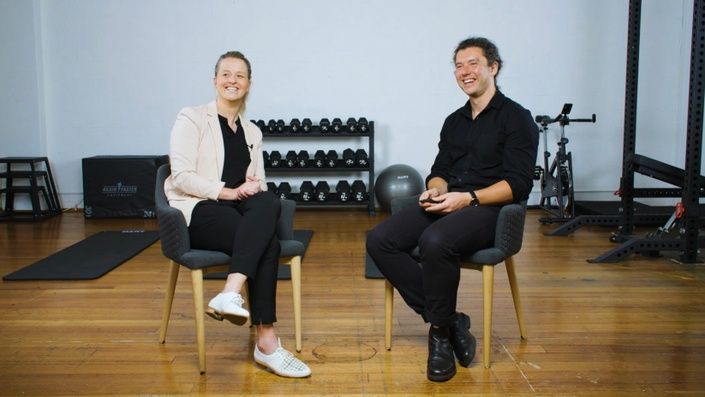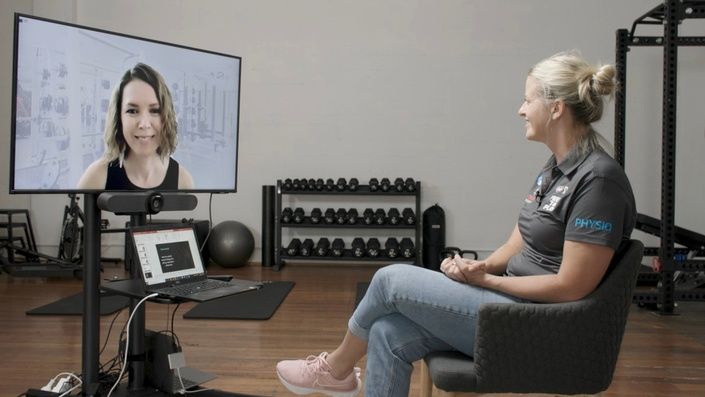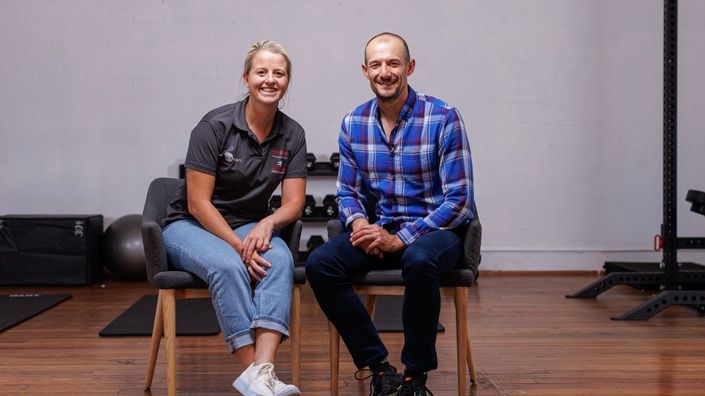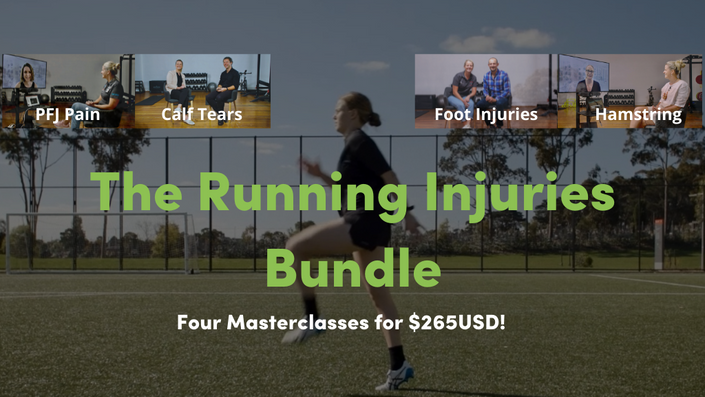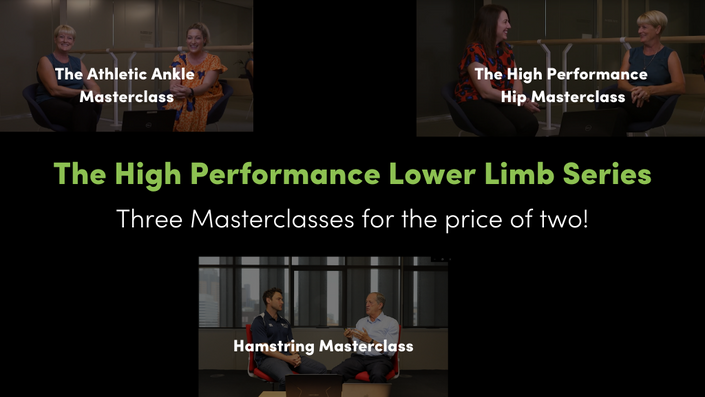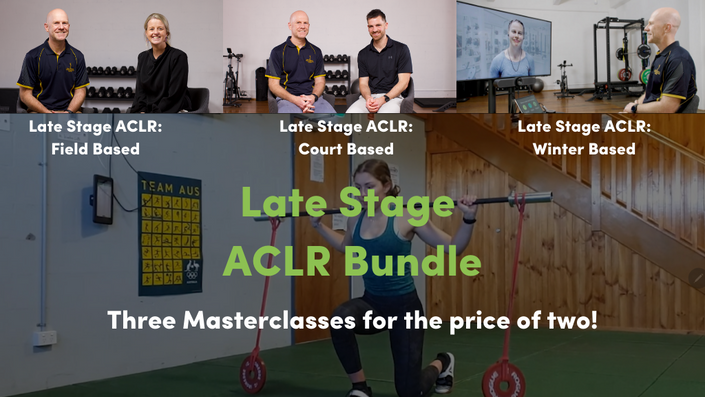In the latest edition of “Mick talks with…” I sit down with Brady Green to discuss all things calf injury and rehabilitation.
For those of you who don’t know Brady, he's a PhD Candidate at the La Trobe University Sport and Exercise Medicine Research Centre and Physiotherapist at the Essendon Football Club. Brady has published works on calf and hamstring muscle strain injuries and has extensive experience in managing these injuries at a clinical level.
I learned plenty from this chat, and I'm sure you will too. This is Part 1, in a 2-part interview.
Mick: Hi Brady, and thanks for sitting down to chat today. Let’s cover some basics first - what is the “calf”, and why is it so important for sports performance?
Brady: As clinicians when we think of the “calf” we typically think about the soleus and the gastrocnemius muscles. There are of course other muscles of the lower leg, but because they are the two largest contributors to function, and they are also the muscles that are most commonly injured, we tend to focus on the soleus and gastrocnemius. But while the soleus and gastrocnemius are the two main muscles that make up the “calf”, they are very different from one another.
The soleus is a very complex muscle that lies deep to the gastrocnemius. It’s a really important muscle for athletic performance, which is something that we probably haven’t recognised fully in the past. Some of the earliest thinking about soleus was that it was essentially just a postural muscle, mostly populated by slow twitch muscle fibers, and that it didn't contribute a great degree to power-based, more explosive athletic tasks. How wrong this was! When we run, when we cut, when we jump, the soleus is doing a large amount of work, and studies do show this. The soleus has a large physiological cross sectional area, demonstrating the important role it plays in generating force.
And then of course we have the gastrocnemius. It is the more proximal and superficial of the two muscles. It is split into the medial and lateral gastrocnemius, and is a biarticular muscle. It has a high population of fast twitch fibers, and contributes greatly during explosive muscle actions. Studies often show it to kick-in even more significantly at later time-points, or closer to terminal propulsion, compared to the more consistent action of soleus. Given that gastrocnemius is quite an explosive muscle, it can be more fatigable as well. But to answer the second part of your question more directly: the “calf” complex is one of the key links contributing to how well we perform athletic tasks; running, accelerating, decelerating, jumping, cutting, and so on. Injuries to the calf can therefore cause us headaches clinically.
Mick: That’s really interesting to hear. I remember being taught at physiotherapy school that soleus is merely a postural muscle, and it wasn’t as injured as much as the gastrocnemius, and it certainly wasn’t given much credit for its power production. It was almost like you could neglect the soleus in preference of the bigger, supposedly more powerful gastrocnemius. But that’s not the case is it?
Brady: A large factor with that is probably what was accepted as clinical dogma at the time. In reality there wasn't really much data available about calf strain injuries, let alone their function in activities like running, and for these reasons the ability to diagnose soleus injuries perhaps wasn't what it is now. For example, while imaging only makes up one part of the equation, a lot of the early studies utilized ultrasound to diagnose the location of calf strain injuries. However we know now that ultrasound is an ineffective means to detect soleus involvement. Unsurprisingly in those earlier studies the rates of soleus injuries were often low, which probably directed our attention and expectations of the structure involved. If we want to get any sort of diagnostic quality with imaging for soleus, MRI is the gold standard for determining the anatomical location of injury. So I’m not convinced we were as well equipped to be detecting and thinking about soleus injuries. We know now that they are far more prevalent than early studies reported. This is really evident in the AFL data that we've looked at as part of my PhD. The prevalence of soleus involvement as the primary muscle injured is about 85% of all calf strain presentations, which is a huge proportion!
But another important thing to add is that while MRI can be helpful, it is only one part of the clinical puzzle and not the sole determinant for making a diagnosis or for determining the course of what happens after a diagnosis is made. There are many occasions that the clinical information gained “on the table” or in the medical room is clear enough to guide the subsequent management and decision-making regarding prognosis. What we find clinically, and how this evolves over time, is by far the best information to guide what we do.
Mick: It's certainly an understated injury, and this question extends on what you just mentioned. Clinically, I see a lot of calf strains in the thirty to forty year old male, playing tennis or going for a run. What is the research showing us about incidence and prevalence in this age group? Is this just a clinical bias that I'm seeing, or is it pretty standard around the world?
Brady: Unfortunately, probably. We published a systematic review of risk factors for calf strain injuries in the British Journal of Sports Medicine. From this study we know there is strong evidence that increased chronological age is a risk factor for future calf strain injury. So as you get older, it’s likely you are at a greater risk of suffering a calf strain. The other main risk factor was having a history of a previous calf strain. So once you have had one calf strain, there’s strong evidence that you’re at greater risk of having a calf strain again in the future.
Now, I also think that clinically, we sometimes look at “older age” and write it off as a mundane finding in terms of injury risk. But we need to drill a bit deeper into the underpinnings of what happens as we age, which probably gives us good information about why they're tearing their calf. We know that the calf muscles are some of the quickest to atrophy as we get older or with the removal of a loading stimulus. So therefore if we're losing cross sectional area of a muscle, then we are also losing some of the force generating qualities as well. We also know that as we get older, we lose length in our fascicles in the calf too. So if we're losing fascicle length, to some degree we're probably losing force generation at high speeds and at longer muscle-tendon unit lengths. Another age-related change is that we lose the stiffness property of the calf muscle-tendon unit, which is needed for optimal action of the stretch-shortening cycle during activities like running.
So suddenly these older men that you are seeing in the clinic, yes they are older, but they are probably in a perfect situation to sustain a muscle injury, and it is quite unsurprising that they are “popping” their calf when they suddenly accelerate, jump, serve in tennis, and so on. But we also need to remember that each of the mal-adaptations I mentioned are modifiable, which gives us some of the key areas to target with exercise interventions for injury prevention or risk reduction strategies in older athletes.

Mick: Interesting. So why is it not females? Are there any differences between males and females in this age group?
Brady: In our systematic review there was weak evidence that gender is not a risk factor for future calf strain injury. So there is no increased level of risk either way. But does this finding have to do with the populations they've studied? Or the data available? Sure. Probably. But I'm not entirely convinced we have an exact answer for you about calf injuries and gender at this point in time.
Mick: No worries. So we know that hamstring and groin injuries are very common soft tissue injuries in athletes; particularly those involved in AFL and Soccer. In terms of incidence and prevalence, where does the calf muscle sit in relation to these two?
Brady: If we look the AFL data and we compare the injury rates over the last ten seasons, it's really common for the calf to come in second behind only the hamstrings in terms of incidence and prevalence of lower limb soft tissue injuries. I think the elephant in the room with the calf is that they can be prone to reinjury. And these individuals we hear about or see in their thirties, often it is not a “first time” calf we are dealing with, often it has happened four or five times, and they're looking for answers.
Mick: I think you’ve just described me! The older gentleman who presents complaining that they’ve torn their calf three or four times. They might be presenting with an acute on chronic tear. They might report multiple bilateral calf tears, and I'm an absolute testament to that myself. I feel like I'm a great physio, but I'm a terrible patient. I've torn my left calf three or four times, my right five times and it's always on the back of going to start a running program without any strengthening, or gradual exposure to running. But you mentioned before that there are two known risk factors at the moment for primary tears and recurrence - past history and higher age. Is low calf strength a risk factor?
Brady: Possibly. This is certainly something that we observe clinically in some populations but it hasn’t been validated scientifically yet to my knowledge. Regardless, I would say that for anyone that needs to run at any intensity you would hope that they do have some basic strength qualities in their calf. Then as clinicians we naturally start to consider, “Ok. Well what are the best benchmarks to measure against?”
A nice, basic marker to look at would be strength-endurance with the single leg calf raise. Typically performed with the knee in extension, at a rate of 30bpm, and counting the number of calf raises until failure or a loss in form. A mix of research and clinical opinion suggests 25 to 35 repetitions is a good goal to aim for, but always enforce good form because people can achieve their set number of repetitions using a lot of interesting movement strategies or compensations.
I would describe the single leg calf raise test as a measurement of the endurance capacity of the calf, without being too specific to the demands of sport or match play. But I would like to think that someone who is going to try to run should be able to perform 3 sets of 20 or 25 repetitions with good quality for the both concentric and eccentric phases of the calf raise. So as a baseline of calf capacity the heel raise test is a nice clean test to consider using.
From here for some athletic populations there’s probably good merit in looking at strength-endurance against an external resistance. For example, you might use a 6RM or an 8RM. In my opinion capturing the ability to produce force over a longer duration will give better information for athletes that need to run, rather than doing an all-out 1RM strength test. Not to mention the practical difficulties that might come with attempting that. So why might we measure a 6 or 8RM? The body weight loads that go through the calf when we run are really high, even at relatively slow speeds, so you would hope a running-based athlete could achieve at least their body weight for that test.
For sports like rugby this could be even higher given what the calf is exposed to, such as what happens in the ‘scrum.’ Some clinicians talking about getting this number up to more like 1.5 to 2x body weight, which would be certainly be nice for some populations, but it probably isn’t an absolute requirement for all running or field-based athletes.
Strength-endurance can be assessed easily by putting weight on a Smith machine and performing straight knee calf raises. For a position more preferential to soleus a seated calf machine or a Smith machine can be used, but regardless of the testing position there will still be some contribution from both muscles. In any case I think if you satisfy that body weight capacity against external resistance for say 6-8 reps, you’re in a good place to begin with. But in reality if you are working with athletes with large running or dynamic demands you definitely cant hang your hat on strength-endurance alone. Sure, it's a good starting point but ultimately you will get the best information about capacity from some type of plyometric measurement.
Often in physio a problem can be if we jump from isolated, local strength measurement of the calf, straight to running. It can be a common mistake to miss the testing or to neglect rehabilitating calf function during plyometric or explosive tasks. So I'd encourage using a simple metric, whether it's a skipping based measurement, or say repeat forward hopping in-series, as well. Something to capture the power component and also the endurance component that are both key for calf function.
Mick: Very sensible and good clinical take homes there. I think you're spot on regarding looking at other measures other than single leg calf raise capacity, especially using a hopping assessment. I don't see a lot of plyometrics in calf rehab plans, and it's such an overlooked part of good quality physio rehab, for a lot of lower limb injuries.
For the second part of the interview click here!

